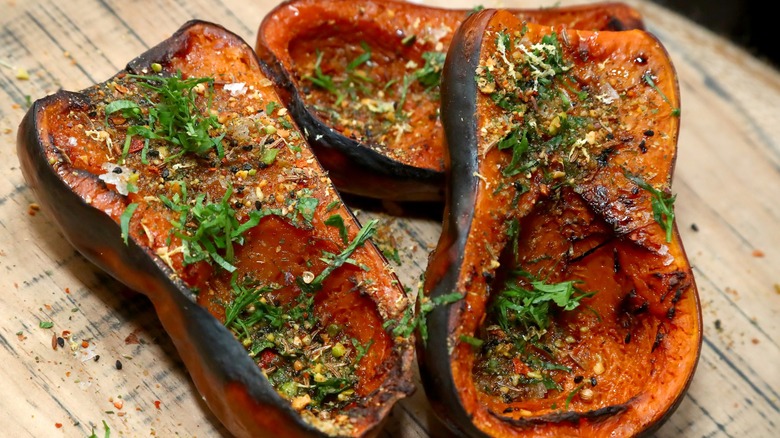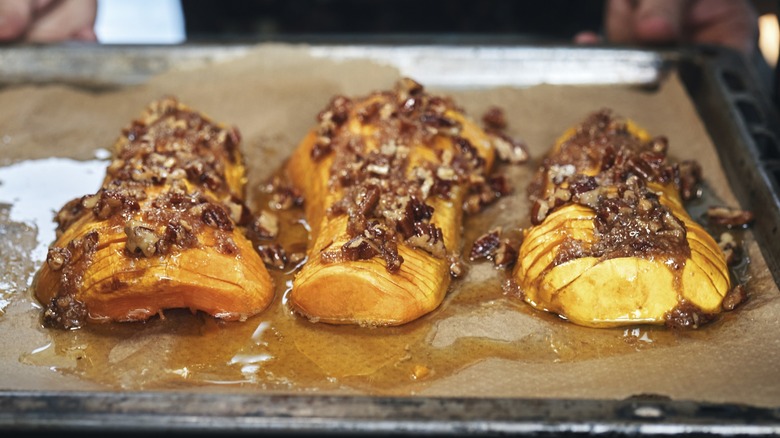Bake Squash Upside Down For Caramelized Results
If you lugged a squash home from the farmers market this year, you're going to need to cook its insides before it'll be soft enough to eat. So, once you manage to saw your way into the middle of the squash (and, if you're struggling, feel free to try this squash cutting tip to make your life easier), it's time to decide: Which way should you place the halves on the baking sheet? Roasting them cut-side-up can lightly steam the veggies — but if you want a more rich, toasted sugar flavor, bake them cut-side-down.
If you cook your squash this way, you'll get the best of both worlds. The edges of your veggies will get nice and caramelized, and the center of the flesh will retain its moisture, allowing it to get soft and tender. While baked squash can still be tasty when roasted cut-side-up, the extra caramelization from placing it upside down brings out additional sweetness along with complex nutty, toasty notes that will amplify the flavor of all your favorite fall dishes.
How to roast squash upside down
Another benefit to roasting your squash halves cut-side-down? It's easier to do than the alternative. While you may need to coat the right-side-up halves with foil so they don't burn, all you have to do with the upside-down ones is rub them with oil and salt, then place them on a baking sheet. You can use more seasonings if you'd like — and we'd recommend black pepper, garlic, and thyme for a savory version, or cinnamon and nutmeg for a sweet one. But if you do so, you'll want to line your baking sheet with parchment paper so the seasonings don't get everywhere.
For maximum caramelization, roast your veggies at a higher temperature of 400 to 450 degrees Fahrenheit. How much time they need to spend in the oven depends on which type of squash you're cooking — for example, smaller acorn squash halves may be done in as little as 35 minutes at 425 degrees Fahrenheit. If you'd like the edges of your squash flesh to have a little extra nuttiness, flip your veggies over during the last few minutes of roasting.
After the insides have had ample time to get nice and tender, place your halves cut-side-up and broil them for just a few minutes. You can then fill the insides with butter, cinnamon, and sugar to build on all that caramelized sweetness or scoop out the flesh to add complex flavor to a savory fall recipe.

